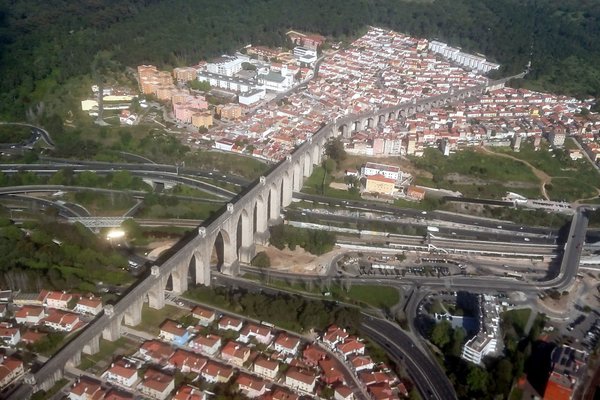Portugal
Aguas Livres Aqueduct
The Águas Livres Aqueduct is a civil engineering construction built in the 18th century to transport drinking water from sources in the parish of Caneças to the western districts of Lisbon. The entire network of canals and water pipelines inside and outside Lisbon covers a length of 58 kilometres, the main section extending over a distance of 14 kilometres. The visible parts of the water supply are protected with masonry. The most significant structure is the section in Amoreiras, where the aqueduct spans the Alcântara Valley in 14 pointed arches.
Site Info
Official Information
- Full Name
- Aguas Livres Aqueduct (ID: 6221)
- Country
- Portugal
- Status
-
On tentative list 2017
Site history
History of Aguas Livres Aqueduct
- 2017: Added to Tentative List
- Added to tentative list
- Type
- Cultural
- Criteria
Links
- UNESCO
- whc.unesco.org
All Links
UNESCO.org
- whc.unesco.org — whc.unesco.org
Community Information
- Community Category
- Secular structure: Civic and Public Works
Travel Information
Recent Connections
News
No news.
Recent Visitors
Visitors of Aguas Livres Aqueduct
- AC
- Alexander Lehmann
- Alexander Parsons
- Ammon Watkins
- Argo
- Astraftis
- Bin
- Can SARICA
- Caspar
- Christoph
- Christravelblog
- CugelVance
- Daniel Chazad
- David Aaronson
- Dimitar Krastev
- Dwight Zehuan Xiao
- Evgenii
- Frédéric M
- Frederik Dawson
- GabLabCebu
- Geert Luiken
- Hadrianus
- Hubert
- Jakob F.
- Jan Zimmermann
- Jarek Pokrzywnicki
- Jasam
- Jawnbeary
- Jonas Kremer
- Kevin Padley-Knight
- Krzysztof B
- Kurt Lauer
- MarcoB_0
- M. Huineman
- nan
- Nick M
- nicku
- Patrik
- Philipp Peterer
- Porcho
- Priyaranjan Mohapatra
- Remigiusz
- Roman Bruehwiler
- shoaibmnagi
- Stanislaw Warwas
- Thomas Buechler
- Thomas Harold Watson
- Tony H.
- Walter
- Wojciech Fedoruk
- Xiquinho Silva
- Zos M
Community Reviews
Show full reviews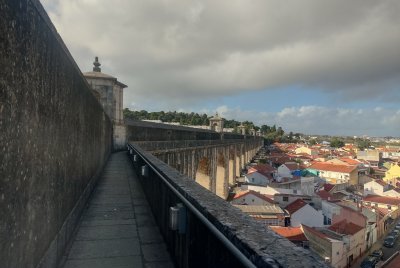
Built in the 18th century, the Águas Livres aqueduct runs across and through Lisbon and offers some of the best views of the city. It is a well-preserved series of 109 stone arches and was built in 1744 to bring clean drinking water to the city's residents. The historic structure still stands tall and survived the massive 1755 earthquake without damage. The main arches extend for 18 kilometers, with the entire aqueduct being almost around 60 kilometers long. At its highest point the arches rise 65 meters high. It was the largest arch in the world at the time of its construction.
A walk along the top grants viewpoints on both sides of the city's river. Although high up, the passageways are wide and the Museu da Água (Water Museum) at its base explains the history of the complex water systems and structures here.
There is a sign outside the ticket office with an overview drawing of the entire canal and a few explanations,nothing more.I came by bus and got off at Campolide station, which is almost directly under the Aqueduct. You could take some good photos from there, but then you have to go up the steep path to get to the Museu do Agua, where I entered the area. Outside the ticket office there is a sign with an overview of the entire canal and a few explanations. I was the only visitor, but there shortly before 5 p.m. (5 p.m. was the last entrance, the …
Keep reading 0 comments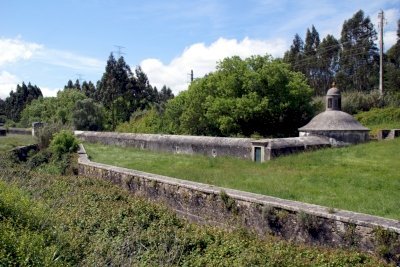
Aqueduto das Águas Livres - Aquaduct of Free Waters – what a great name for a city's water supply. However, its construction in the 18th century was financed by additional taxes, including taxes on olive oil and wine. The result is impressive, as you can see when approaching Lisbon airport from the southwest. To your left, you can spot the centrepiece of the aqueduct, the section that spans the Alcantara Valley (a few minutes earlier you have a nice view of the Belem WHS). But the Águas Livres Aqueduct is more than that, the entire canal system has a length of 58 kilometres.
The main section of the aqueduct begins in Belas, about halfway between Lisbon Airport and Sintra. Here, in Mãe d'Água Velha (photo), water from the springs was collected via a system of canals and further transported to Lisbon. The walled water pipeline and the air shafts are visible. Between Caneças and Belas, a visible part of the aqueduct runs a few kilometres along the N250 (or rather the N250 runs along the aqueduct). It was the first stop on my Portugal trip in May 2018 and only the first part of my visit to the Águas Livres Aqueduct.The Alcantara Aqueduct is the main point of interest of this TWHS. Without a doubt, it is impressive to look up from the bottom of the valley to the top of the pointed arches, the highest being 65 metres high. But the walk at the top of the aqueduct …
Keep reading 0 comments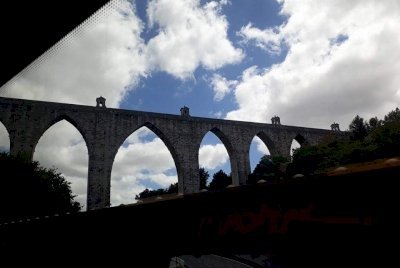
Having just passed under the aqueduct by random chance on a quick subway ride, I must say the Agua Livres Aqueduct had quite an impact. Although it's true that many impressive aqueducts were made around the same time period as it, it is uniquely majestic as being situated in and serving the heart of a world-class city like Lisbon. If not on its own merits, I'd love to see the aqueduct with World Heritage status even as part of a more comprehensive Lisbon site, and I do think that design-wise, its vast arches are really quite a unique and graceful sight to behold.
Keep reading 0 comments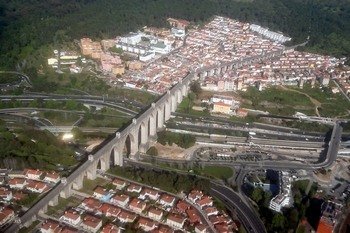
I visited the Aguas Livres Aqueduct, namely its most famous arches over the Alcântara Valley in Lisbon. It is an impressiv structure that crosses a large valley Full of streets an modern buildings. For WHS freaks it is a nice enough walk. Here a few Infos that might help: You can walk this part of the aqueduct only from the southern end, the Museu de Agua in Calçada de Quintinha. There is no entrance or exit on the other side. Therefore you walk the same way twice. Theoretically there is a path on both sides of the aqueduct but there is only on opening that allows you to change sides. You start on the left side. I decided to change to the other side to be on the inner side of the bend to enjoy a better view. Both ways it is more then half an hour to walk but of course you can turn back whenever you choose. Beside this most prominent section the whole aqueduct extends over 18 miles. It starts supposedly at the Mae d’Agua Velha in Belas near Sintra. I couldn’t find an address of this though you can see long sections of an aqueduct crisscrossing Belas. The nomination includes also the endpoint within Lisbon, the Mae d’Agua Nova, another branch of the Museu d’Agua, which I did not visit this time. While my walk on the aqueduct was impressiv it is austere and there are no signs or explanations at all, only a brochure at …
Keep reading 0 comments
